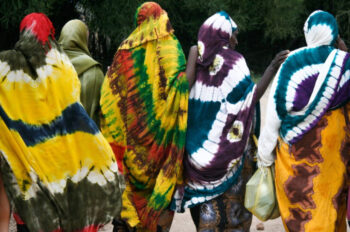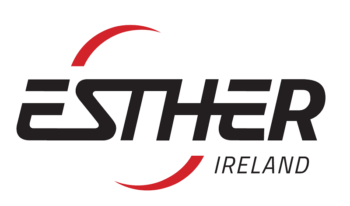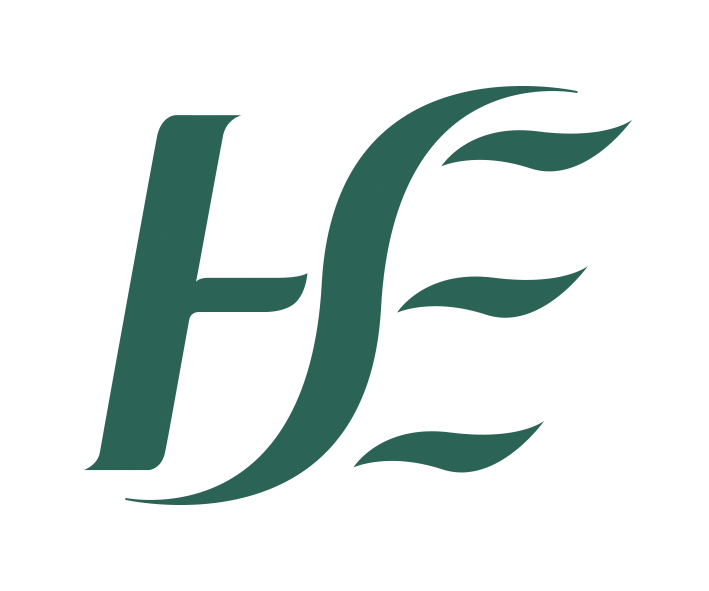Transnational Solidarity: A feminist manifesto for social justice and health equity
Brittney S. Mengistu and Moné Vasquez

Photo credit Antonio Jaén Osuna
As the waves of the Decolonise Global Health movement overtake institutions, travel across borders, and unsettle normative ways of collaboration and partnership, we find ourselves in the middle of a monumental shift in global health research and practice. But what exactly is “decolonisation” in a world that struggles to prioritise human dignity, or where the value of respect, access to health, and fight for equality, freedom, security, and self-defence continue to be manipulated by a colonial system that oppresses and violates BIPOC (Black, Indigenous, and People of Colour) people and their territories?
The project of decolonisation must also consider the implications of sustainable practices in relation to the natural environment. Certainly, the call to decolonise global health not only draws attention to the colonial undertones of humanity’s (in)action but also provides a roadmap for centering social and epistemic justice within the field of global health. This manifesto is born out of an urgent need to centre BIPOC feminist perspectives in the de- and anti-colonisation of global health – a clarion call to practitioners, policymakers, researchers, and institutions in reimagining transnational solidarity and collective action.
As BIPOC global health scholars and practitioners, we are proposing a new way of thinking about decolonising global health that draws from our lived experience and global health scholarship. In this manifesto, we argue for transnational solidarity and to unify actions that rely on critical care and conscious actions. By understanding the intersectionality of power and its impact on health (in)equities, we can formulate a path toward an intersectionality of resistance and transnational solidarity. From Black communities in the U.S. resisting militarised police forces to indigenous communities in Chile experiencing ongoing land dispossession, both communities, as well as many others around the world, continue to experience abuses in power. The struggles we are collectively fighting are one against power and the multiple inequities that continue to create and sustain disproportionate health outcomes in BIPOC communities.
Transnational solidarity for global health equity
Carol C. Gould’s[1] definition of transnational solidarity describes the entanglement of the social and political life of global networks and how social empathy is integral to creating and enacting solidarity. She states that social empathy becomes a means to understand “why we come to take the rights of others seriously and beyond this, how these relations can contribute to making these rights more extensively realised.” With this manifesto, we apply a Black and Indigenous feminist lens to transnational solidarity and draw attention to the (neo)colonial structures, land dispossession, and the ongoing acts of state violence that continue within our respective communities and its impact on health. We reimagine a just global health that makes and holds spaces for communities marginalised by society. We reimagine a just global health that inspires all scholars and practitioners to reflect on their positioning in our communities and the “big emotional response”[2] that has led them to this field. Most importantly, we reimagine a just global health that recognises the intersectionality of power, inequities, and resistance and how we must galvanise our communities in our quest for social justice and health equity.
Intersectionality of power
Many scholars and practitioners have called attention to the glaring power imbalances within global health[3]. For example, global health funding, vaccine distribution, and other essential aid and supplies are overwhelmingly centralised in Western Europe, the U.S., and Canada, thus positioning the global majority as merely recipients of essential resources and aid rather than equal partners in addressing population health. The underlying phenomenon that perpetuates this power imbalance is what we will call the intersectionality of power. The intersectionality of power refers to power or privilege that is accumulated at the intersection of multiple constructs that operate within systems of oppression. For example, philanthropic institutions founded in Euro-America may only fund Euro-American charities with a footprint in the global majority. These organisations may be considered more credible and amass unprecedented amounts of wealth to continue their global health charitable work. The philanthropic institution is further solidified as a flagship global health organisation, shaping the global health research agenda and maintaining unequal decision-making in global health practice. The intersectionality of power posits that institutions and individuals with power will amass more power and privilege at the intersection of their privileged position as long as they remain situated within and fail to disrupt systems that uphold and perpetuate subjugation[4].
Intersectionality of inequities
The intersectionality of inequities is a persistent problem of the present, and though we see the struggles of BIPOC communities worldwide, we must not forget to reflect on the disproportionate impact of global inequities on individual health. The social, political, and economic environments in which health inequities persist and the power imbalances that result from the intersectionality of power undoubtedly influence the health inequities many communities experience. Simply, the intersectionality of inequities stems from the intersectionality of power.
We define the intersectionality of inequities as the accumulation of injustices experienced by communities as a consequence of the colonial legacy. For instance, settler colonialism in Chile has led to the continued dispossession of indigenous communities, particularly those most affected by Western development ambitions, culture and goals, the energy transition, and green mining projects. The conceptualisation of development imposed by the Global North has demonstrably and significantly impacted BIPOC communities in terms of their ability to access and maintain ‘good living’ and health like mentioned in Mapuche cosmovision by the Kvme Mongen. As a mestizo-Mapuche scholar, I, Moné Vasquez, have dedicated a substantial portion of my professional career to conducting research with indigenous communities in Abya Yala, with a particular focus on Wallmapu. My familiar connection to this territory has enabled me to comprehend the extent and nature of state-sponsored violence directed towards these communities historically. I have seen how the introduction of Western knowledge and culture has resulted in the imposition of white supremacist values as the sole form of identity and knowledge, leading to the rejection of indigenous identity, knowledge systems, economic systems, health practices, and educational systems, as well as the dereliction and refusal to acknowledge indigenous ancestral territory.
Intersectionality of resistance
Resistance does not always manifest as picket signs and protests; rather, resistance can be subtle acts that challenge systemic oppression. As individuals occupying multiple identities marginalised by society, we argue that resisting power imbalances is multi-layered and makes way for the intersectionality of resistance. As BIPOC researchers and scholars, we practice resistance in our thinking, writing, and being as we challenge harmful discourses that have shaped our understanding of global health and practices within this field. We embody resistance. As a Black woman from the U.S., I, Brittney, reject any and all homogenisation of Blackness, Womanhood, and American-nes that does not acknowledge the nuances of lived experiences at the intersection of these identities. Resisting narratives that fail to ground individual lived experiences can be harmful, both within communities of global health practitioners and the communities we serve. The intersectionality of resistance is an inward and outward practice, where we actively resist homogenising communities and acknowledge the nuances of resistance at the intersection of inequities.
Transnational solidarity in action
The intersectionality of resistance requires us to rethink our experiences and how they are connected to other, similar struggles of power asymmetries and health inequities. This manifesto urges practitioners to consider a just global health grounded in BIPOC feminist thought that simultaneously considers the interactions between humans, animals and the nature ecosystem. We believe that a commitment to dismantling the oppressive systems that perpetuate inequality, reinforce subjugation and ecological destruction, and to replace them with structures that value human dignity, lived experience, and ultimately respect the earth. We believe that our collective action will be the groundwork for a new course – where dreaming and reimagining a just global health is not a distant future but a near reality. This manifesto is our first step toward transnational solidarity.
We believe that strengthening transnational solidarity necessitates a collectivistic mindset to achieve any form of change. We call for a collective responsibility and consciousness to resist systems that have historically and presently harm communities marginalised by society. It requires us to learn and/or unlearn, to deconstruct and decolonise our beliefs and practices, and embody respect and justice for all. It requires collective resistance through an ideological shift that can transform global health policies, funding mechanisms, and ultimately practice. It requires resisting unilateral decision-making and the actions of individuals and organisations who enact violence through their “goodwill” and passivity. It requires us to embody resistance and solidarity within communities and across borders for a more equitable global health.
[1] Gould, Carol C. (2007). Transnational Solidarities. Journal of Social Philosophy 38 (1):148-164.
[2] Cole T. The White-Saviour Industrial Complex. The Atlantic. March 21, 2012. https://www.theatlantic.com/international/archive/2012/03/the-whitesavior-industrialcomplex/254843/
[3] Abimbola, S., Asthana, S., Montenegro, C., Guinto, R. R., Jumbam, D. T., Louskieter, L., … & Pai, M. (2021). Addressing power asymmetries in global health: Imperatives in the wake of the COVID-19 pandemic. PLoS medicine, 18(4), e1003604.
[4] Kumar R, Khosla R, McCoy D (2024) Decolonising global health research: Shifting power for transformative change. PLOS Glob Public Health 4(4): e0003141. https://doi.org/10.1371/journal.pgph.0003141
About the Authors
 Brittney S. Mengistu is a feminist scholar, postdoctoral researcher, and lecturer in Global Health at Vrije Universiteit Amsterdam. Her research interests include participatory methodologies, humanitarian health, and the anthropology of mental health and migration. Brittney advocates reflexive and inclusive practice in global health by incorporating a decolonial feminist lens into her research and teaching. Brittney is also an invited speaker and has delivered numerous workshops on positionality and reflexivity in global health, and she has presented her experience with reflexive praxis at conference presentations and lectures. Brittney holds a PhD in Anthropology from King’s College London and an MPH from Emory University.
Brittney S. Mengistu is a feminist scholar, postdoctoral researcher, and lecturer in Global Health at Vrije Universiteit Amsterdam. Her research interests include participatory methodologies, humanitarian health, and the anthropology of mental health and migration. Brittney advocates reflexive and inclusive practice in global health by incorporating a decolonial feminist lens into her research and teaching. Brittney is also an invited speaker and has delivered numerous workshops on positionality and reflexivity in global health, and she has presented her experience with reflexive praxis at conference presentations and lectures. Brittney holds a PhD in Anthropology from King’s College London and an MPH from Emory University.

Photo by Carin Verbruggen
Moné Vasquez is a mestizo-Mapuche scholar, researcher, and lecturer at Vrije Universiteit Amsterdam, where they are currently pursuing a PhD in Indigenous identity politics and its intersections with issues of food, water, knowledge, and territory. Their research delves into the complexities of Indigenous identity within contemporary socio-political contexts. Their work entails engaging with Indigenous communities, exploring their perspectives, and advocating for their rights and self-determination. Their practice employs participatory, counter-mapping, and other decolonial methods to reflect a commitment to collaborative and inclusive approaches that centre Indigenous voices and challenge dominant narratives, contributing to more nuanced understandings of Indigenous experiences and struggles for justice.
For more insightful blogs like this, subscribe to the ESTHER Ireland Newsletter! Click here to sign up.
To view previous blog posts, click on the page numbers below

